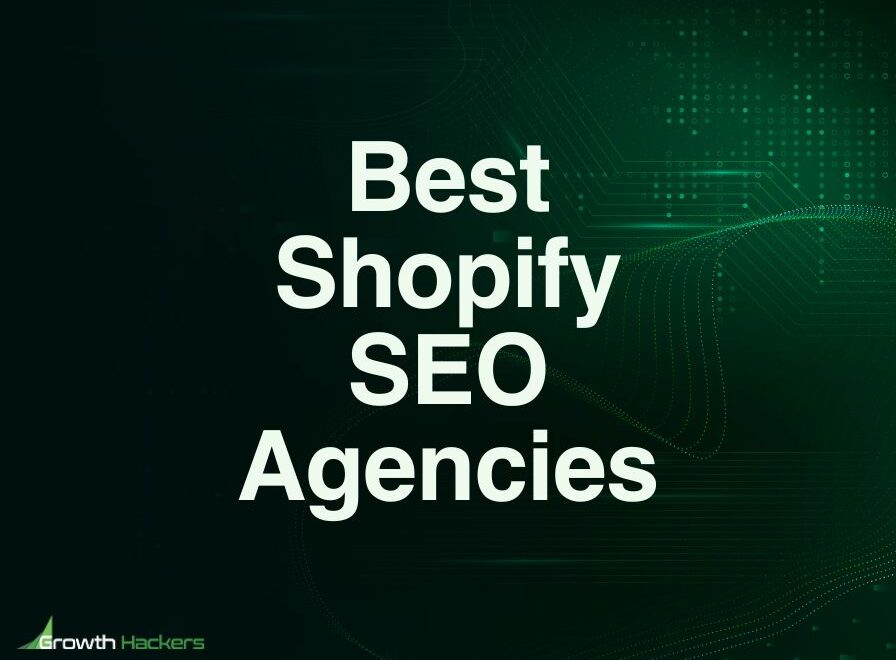Social selling is about using social media to attract and nurture potential buyers. It replaces outdated sales tactics with a more organic, trust-based approach.
Instead of pushing products, inbound social selling focuses on offering insights, answering questions, and engaging with audiences to build real connections and maintain meaningful relationships in nurturing professional connections over time.
Adding new contacts or competitors to lists can help monitor and engage effectively, but the focus should be on creating meaningful interactions rather than merely expanding one’s network.
Inbound Social Selling as a Strategy
It’s a strategy that combines social media, valuable content, and relationship-building to drive sales. Monitoring a prospect’s social media channels allows salespeople to engage effectively by tagging prospects with product offers and targeted interactions. The goal is to educate and support potential buyers rather than pressure them into a purchase.
By sharing expert insights and responding to customer needs, businesses can attract interested buyers and earn their trust over time. Research has found that providing valuable information confirms the benefits of utilizing social selling techniques.
Traditional Sales Methods vs. Social Selling
Traditional Sales Methods
Traditional sales rely on cold calling, aggressive pitches, and intrusive ads. These methods interrupt people and often get ignored.
Hard-selling tactics force products onto customers without considering their needs. This approach leads to low engagement and resistance from buyers.
Social Selling
Social selling builds connections naturally. It provides value first, encouraging buyers to reach out when they’re ready. Additionally, it helps extend your professional network by leveraging social media and existing relationships to enhance connections and outreach.
It focuses on listening to potential customers, understanding their problems, and offering helpful solutions. Engaging with a new follower through direct messages, providing insightful content, and maintaining consistent interaction can drive traffic to your website and build stronger relationships. This makes the sales process smoother and more effective.
Effectiveness of Social Selling
Sales professionals using social selling outperform those who don’t. Research shows that social sellers generate more leads and close deals faster than those using traditional methods by sharing original content to establish themselves as thought leaders.
Buyers trust brands and individuals who engage with them openly instead of pushing a sale. Social selling strengthens credibility and improves customer relationships.
Providing thoughtful content and engaging with prospects through their questions is crucial in delivering meaningful interactions in the sales process.
Want to master social selling the inbound way?
Contact Growth Hackers
Integration of Social Selling with Inbound Marketing Tactics
Social selling becomes truly effective when it aligns with inbound marketing strategies. Instead of working in isolation, sales and marketing teams must work together to attract, engage, and nurture prospects. This integration creates a seamless customer journey where leads receive valuable insights, not just sales pitches.
Content Creation for Social Selling
Content is the foundation of social selling. To get started with social selling, businesses need high-quality, relevant content to engage potential buyers. The goal is to create resources that educate, solve problems, and position a company as a trusted source of information.
Providing value by offering thoughtful engagement is crucial. Salespeople can enhance their interactions by offering valuable content and effectively responding to questions, thereby fostering stronger relationships and increasing the likelihood of conversion.
- Educational blog posts: Writing articles that answer common customer questions builds credibility. A company selling software might create blogs explaining industry trends, best practices, or troubleshooting tips.
- Short-form and long-form videos: Video content increases engagement. Tutorials, product demos, and expert interviews attract attention on platforms like LinkedIn and Instagram.
- Ebooks and whitepapers: In-depth resources provide valuable insights and can be used for lead generation. Offering a downloadable guide in exchange for an email address helps businesses nurture leads.
- Webinars and live Q&A sessions: Live events build relationships and provide real-time engagement. A company that hosts monthly webinars on industry challenges establishes itself as an authority.
Engagement: More Than Just Posting
Posting content is just one part of social selling. The real impact comes from actively engaging with the audience through timely replies to their comments and messages. Sales teams must participate in discussions, respond to comments, and build connections.
Offering thoughtful content is also crucial. Providing value through personalized engagement and addressing prospects’ questions helps build relationships and trust with potential clients.
- Responding to comments and messages: Timely replies show that a business values its audience. Engaging in conversations strengthens relationships.
- Joining industry discussions: Participating in relevant LinkedIn or Facebook groups increases visibility. Businesses that contribute valuable insights attract potential customers naturally.
- Asking and answering questions: Being proactive in online conversations positions a brand as an expert. Answering a prospect’s question with helpful advice is more effective than a sales pitch.
Lead Nurturing Through Social Selling
Not every prospect is ready to buy immediately. The practice of social selling allows businesses to stay top-of-mind by nurturing leads over time. Instead of pressuring a sale, the focus is on guiding the customer through their decision-making process.
Engaging with both potential and current customers on social media provides valuable insights into their behavior and preferences, which can assist in guiding them toward making a purchasing decision.
- Personalized direct messages: Instead of sending generic sales pitches, businesses should engage with potential buyers based on their interests. A salesperson who references a prospect’s recent LinkedIn post shows they are paying attention.
- Drip campaigns: Email sequences that deliver valuable content at regular intervals help keep potential buyers engaged. A series of educational emails about a specific industry challenge builds trust.
- Follow-ups with insights: After initial contact, continuing the conversation with new information keeps prospects engaged. Sending an article or a case study relevant to a prospect’s needs shows ongoing value.
Social Proof and Testimonials
Companies trust other people more than brands. Social proof plays a huge role in building credibility. When prospects see real success stories, they are more likely to engage.
Social selling means consistently putting in effort to build genuine interactions, which provides a competitive edge in the market.
- Customer testimonials: Sharing stories from satisfied customers builds trust. A short LinkedIn post highlighting a client’s success is more convincing than a direct sales message.
- Case studies: Demonstrating how a company solved a specific problem adds credibility. A well-structured case study with measurable results reinforces the value of a product or service.
- User-generated content: Encouraging customers to share their experiences creates authentic engagement. A brand that reshapes customer feedback into social media content builds a strong community.
Tracking and Analysis: Measuring Success in Social Selling
Businesses must track social selling performance to know what’s working, such as engaging each new follower with an offer to visit the company’s website. Data-driven decisions lead to better results.
Actively pushing content, not just sharing it, helps sales reps establish themselves as thought leaders and enhances brand trust and engagement.
- Social media analytics: Platforms like LinkedIn, Twitter, and Facebook provide engagement metrics. Monitoring likes, shares, and comments help businesses understand audience interest.
- Lead tracking in CRM tools: A Customer Relationship Management (CRM) system helps businesses track interactions. Sales teams can see where prospects are in the buying process and personalize their approach.
- Split testing content strategies: By leveraging A/B testing, you can try different types of posts, formats, and messaging helps refine social selling efforts. Comparing engagement rates reveals what resonates with the audience.
Building a Social Selling Strategy with an Inbound Focus
Identifying the Ideal Buyer
Understanding the target audience is key to social selling success. Creating detailed buyer personas helps tailor content and engagement strategies to provide solutions that meet customer needs.
Knowing customer pain points and interests allows businesses to provide relevant information. This sense of understanding in engagement ensures that interactions feel natural and familiar, avoiding an aggressive approach that could be off-putting. The more aligned the content, the stronger the connection with potential buyers.
Creating Customer-Centric Content
People engage with content that speaks to their needs. Providing solutions to common problems, such as offers when a salesperson, builds trust and keeps buyers interested.
Educational content, success stories, and industry trends help position a brand as an expert. The more valuable the content, the more likely people are to engage. Engaging with customers on social media platforms can also help forge new connections, further expanding your network and reach.
Engaging Beyond Posting
Social selling goes beyond just sharing content. Enhancing social media engagement can be achieved by supplementing social posts with digital strategies, allowing salespeople to effectively connect with potential customers.
Participating in discussions, answering questions, and offering helpful advice on social platforms deepens relationships and builds credibility.
Consistent interaction shows potential buyers that a brand is accessible and knowledgeable. This makes them more likely to consider purchasing in the future.
Master social selling the inbound way and attract loyal customers now!
Benefits of Social Selling the Inbound Way
Increased Visibility and Brand Awareness
Regular engagement on social media increases brand recognition, especially when you encourage followers to go to the company’s website for more information. The more a business interacts, the more people remember it.
Sharing relevant industry updates and company announcements as news on platforms like LinkedIn and Twitter can also strengthen relationships with prospects and position your brand as a thought leader in the market.
A strong social presence makes it easier for potential buyers to find and trust a brand.
Enhanced Credibility and Personal Brand Building
People prefer buying from those they trust. Establishing expertise through social selling builds credibility and enhances reputation over time.
By directing followers to the company’s website and utilizing social media and advertising, salespeople can effectively promote their products and establish their company’s expertise.
Providing valuable insights consistently makes a brand or individual a go-to resource in their industry.
Effective Lead Generation and Conversion Rates
Social selling attracts leads naturally by focusing on the things that matter to potential buyers.
Users engage with businesses that offer helpful information instead of just selling products.
Well-nurtured leads are more likely to convert into customers. Relationships built on trust lead to long-term success.
Improved Customer Feedback and Service
Social selling makes it easier to understand customer needs and showcase product features. Engaging with buyers directly helps businesses improve products and services.
Understanding the buyer’s journey is crucial for engaging effectively with prospects through relevant content and social selling strategies.
Listening to feedback and responding promptly strengthens relationships and increases customer loyalty.
What is Social Selling the Inbound Way? – Final Thoughts
Social selling the inbound way is about building trust, providing value, and nurturing relationships on social media. Instead of relying on cold calls and aggressive sales tactics, businesses engage with potential customers through valuable content and meaningful conversations. This approach leads to higher brand visibility, stronger customer relationships, and more qualified leads who are ready to convert.
By combining social selling with inbound marketing, companies create a sales strategy that feels natural and helpful rather than pushy. Engaging with the right audience, sharing problem-solving content, and tracking performance all contribute to a more effective approach. When done correctly, social selling turns social media platforms into powerful tools for attracting and converting customers.
Growth Hackers is a leading inbound marketing agency where we don’t just run social media campaigns—we craft strategies that bring real, measurable results. Our team of experts knows how to position brands as industry leaders, generate inbound leads, and keep your pipeline full of engaged prospects. Whether you need content that attracts or engagement that converts, we make sure your social selling efforts drive real business growth.
Your competition is already capturing attention—why not you? If you want to maximize your social media presence and attract qualified leads who are ready to buy, we’re here to help.
Contact Growth Hackers today and start turning your social media into a lead-generating machine.






